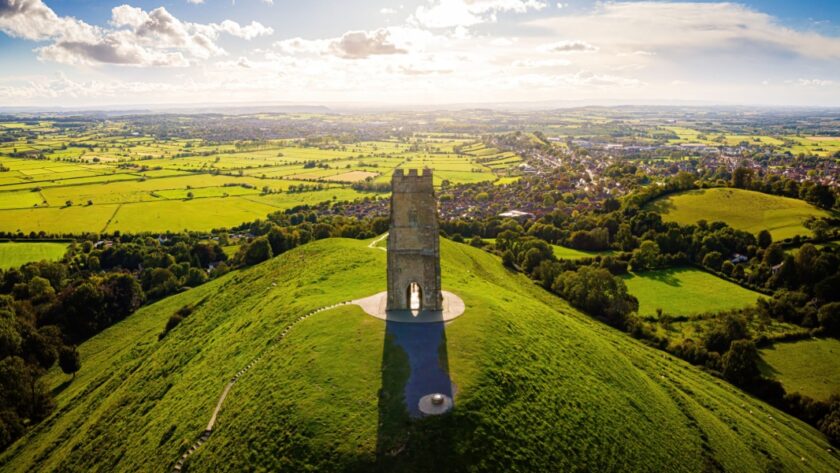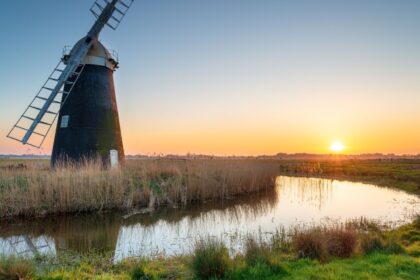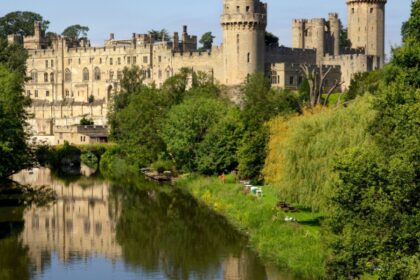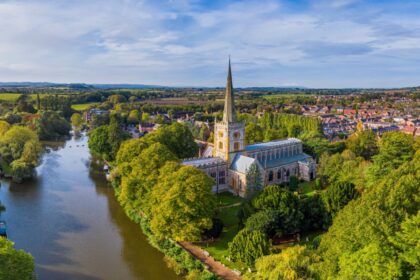In the west of England, where the hills begin to rumple up and the apple trees grow with suspicious enthusiasm, you find Somerset. It is a county full of green fields, ancient myths, peculiar traditions and a landscape that seems perfectly designed for leisurely pottering. Time moves differently here. Some villages appear to have politely opted out of modern life entirely, while others fully embrace music festivals, giant wicker figures and the production of vast quantities of cider.
It is a place where the past still whispers and the present tends not to rush.
Glastonbury, King Arthur and the slightly mystical
Somerset does not shy away from its myths. Glastonbury, in particular, is a swirling mixture of legend, spirituality and souvenir shops selling crystals. This is where some say King Arthur is buried, where Joseph of Arimathea is said to have planted the original Holy Thorn, and where Glastonbury Tor rises like a perfectly positioned film set.
Today, Glastonbury is just as famous for its music festival, where thousands descend each summer in various states of damp enthusiasm to listen to bands, lose their tents, and tell stories afterwards that may or may not be true.
Cathedrals, abbeys and the slightly spectacular
Somerset does a fine line in ecclesiastical architecture. Wells Cathedral, with its magnificent scissor arches and honey-coloured stone, sits in England’s smallest city and manages to feel both grand and intimate. Nearby, the Bishop’s Palace comes complete with a moat and swans who, rather impressively, ring a bell for food.
Further west, Glastonbury Abbey stands in ruins but still manages to feel faintly otherworldly, with enough lingering atmosphere to encourage more than a few ghost stories.
Bath, Romans and rather a lot of stone
In the northeast corner of Somerset sits Bath, a city so elegant that even the Romans thought it was worth building a spa here. The ancient baths remain, complete with steaming pools and slightly alarming statues. Above them, the Georgian crescents and terraces curve their way around the hillsides as if drawn with a particularly steady hand.
Jane Austen lived here briefly, and while she was not overly fond of the city herself, modern visitors tend to fall for its charm very quickly.
Cider, cheese and cream teas (but not all at once)
Somerset is famous for its cider, which comes in a variety of strengths ranging from pleasantly refreshing to mildly hazardous. Farm gates often display hand-painted signs offering bottles of the stuff, usually accompanied by small honesty boxes and helpful warnings.
The county also claims Cheddar cheese as its own, named for the village of Cheddar where the dramatic limestone gorge slices through the Mendip Hills. Cream teas are readily available too, though you are well advised to pace yourself.
Moors, levels and the occasional flood
Large parts of Somerset consist of low-lying wetlands known as the Levels, where rivers weave through fields and reed beds and the skies seem particularly wide. In winter, parts flood with predictable regularity, creating temporary lakes and the occasional headache for farmers.
The Quantock and Mendip Hills rise more reassuringly, offering excellent views, quiet walking trails, and more than enough opportunity to get slightly lost while claiming you know exactly where you are.
Where England remembers how to slow down
Somerset is not a county that demands attention. It simply offers up ancient myths, handsome cities, rolling hills and apple orchards heavy with fruit. After a few days here, you will find yourself slowing to the same gentle pace, wondering whether another cup of tea or one more walk sounds like a good idea. It usually does.





